The hot and dry weather in Texas this summer has unveiled an unexpected surprise. Park rangers at the Dinosaur Valley State Park in Glen Rose spotted about 70 dinosaur tracks that had been hidden under water and mud in the Paluxy River, which cuts across the park. They estimate the footprints date back about 110 million years.
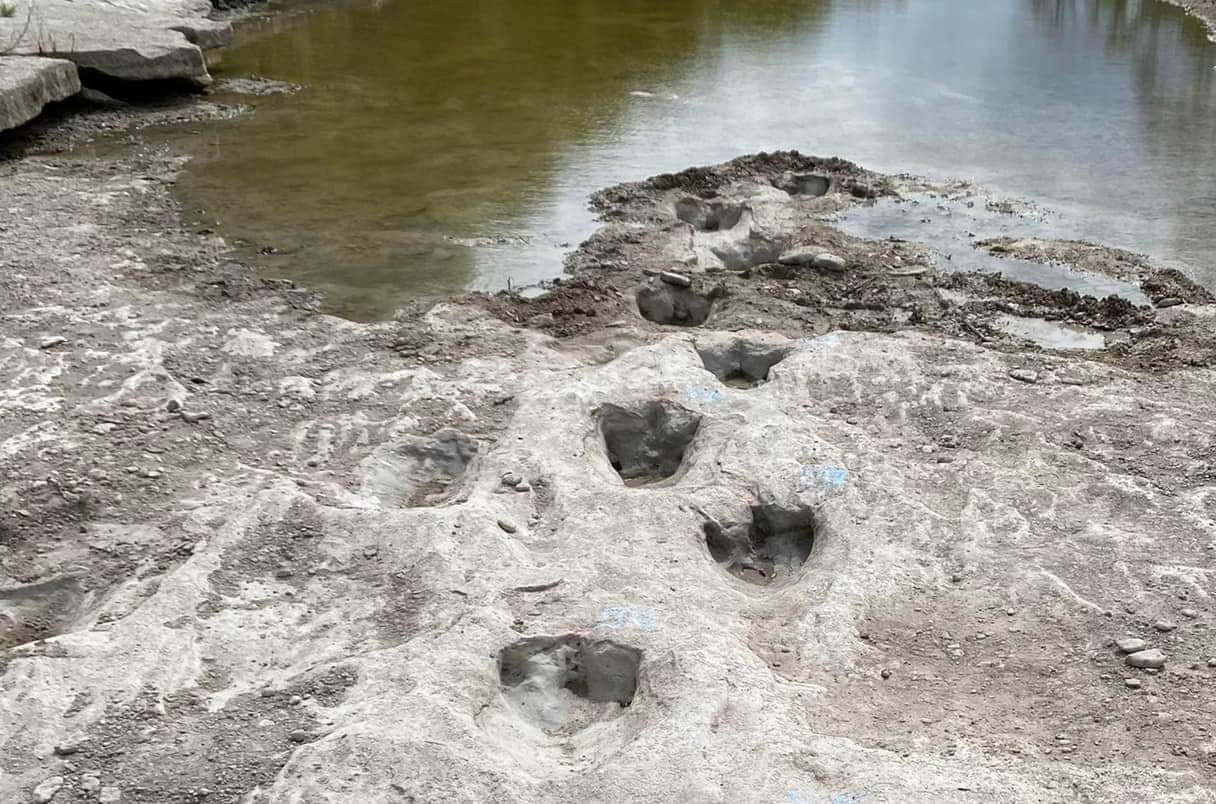
When dinosaurs roamed the Earth, they imprinted their footprints in the mud, much like how we might leave our prints on a muddy trail. As time passed, the mud around these impressions was replaced by layers of sand and stones, gradually solidifying into rock. These fossilized footprints are what we observe and marvel at today around the world.
The newly found footprints belong to two types of dinosaurs called Acrocanthosaurus and Sauroposeidon. The first one, a therapod, is known for having hollow bones, three toes and claws. The second, a sauropod, had a very long neck and tail, a small head and four legs, according to the Natural History Museum of London.
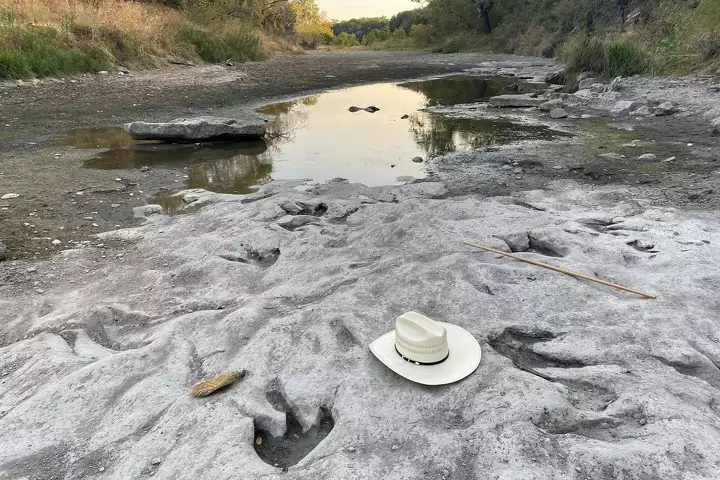
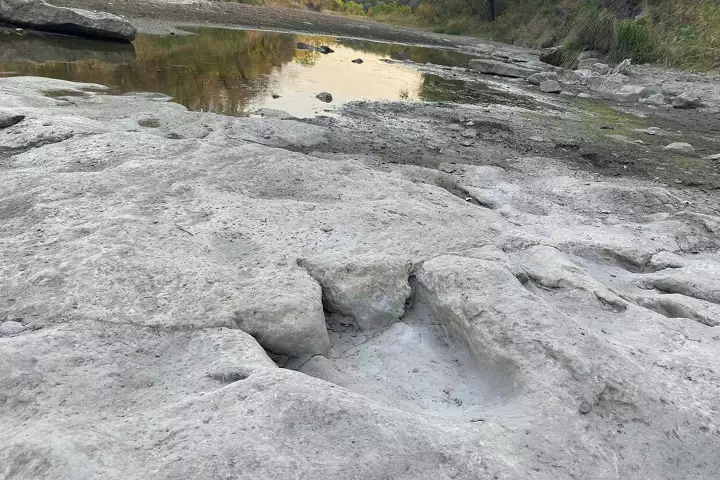
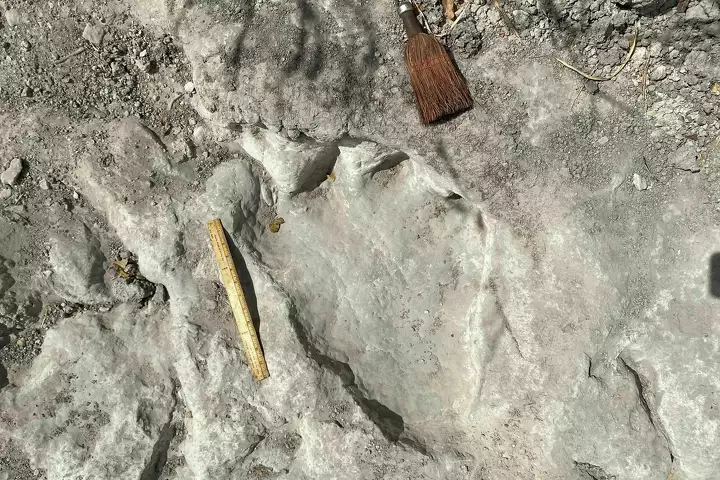
Acrocanthosaurus was one of the largest predators in North America during the Early Cretaceous period, which went from 145 million to 101 million years ago. Researchers believe that it would have hunted the Sauroposeidon. Dinosaur Valley State Park is believed to have hosted many dinosaurs as this isn’t the first time tracks have been found.
Revealing drought
Paul Baker, an employee who helps clean up and map dinosaur tracks at the park in Texas, told CNN that he has “never seen this many dinosaur tracks” before.
“It’s exciting to see something that nobody else has seen — it’s almost like a treasure hunt, in a way. I thought I had seen every dinosaur track there is,” Baker said.
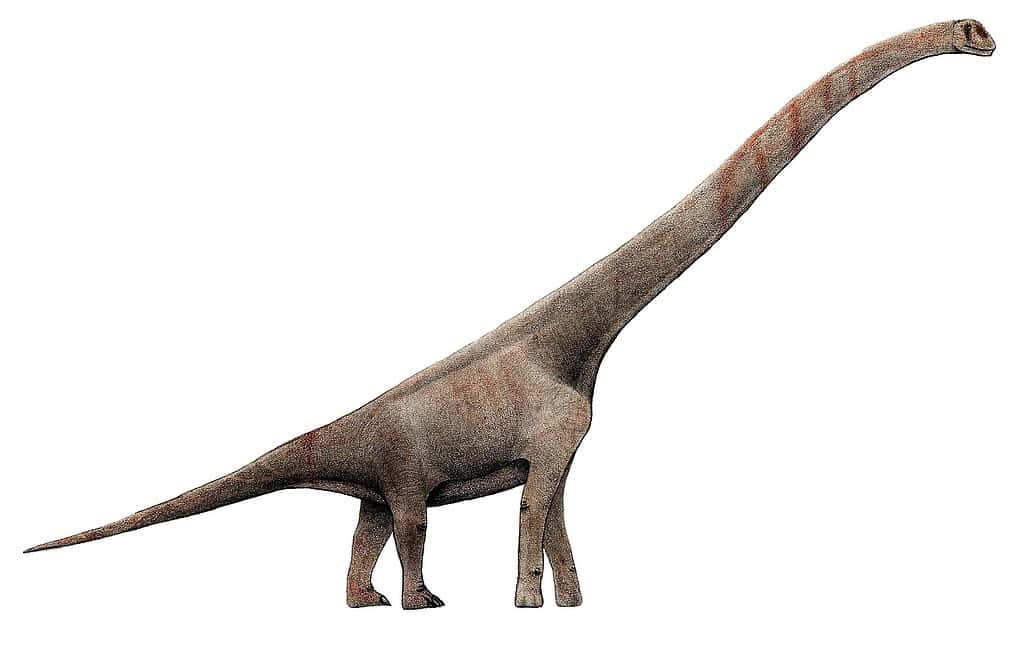
The park, an hour and a half south of Dallas, is a hotspot for dinosaur fans and tourists who typically go to the Paluxy River, now dry because of the drought, to swim and kayak. Parts of Texas have been dealing with a severe drought since June, with a third of the state now affected by it, according to a recent report by the US Drought Monitor.
The tracks were first seen by members of the Friends of Dinosaur Valley State Park, an NGO that supports the park. On a Facebook post, they said these were the most tracks they had ever found in The Ballroom, the largest track site in the park. The name is owed to the many directions the tracks move in — as if the dinosaurs were dancing.
Glen Kuban, who has worked in the park for over 40 years, told CNN that while the drought unveiled the tracks, it took a lot of work to actually make them visible.
“The tracks are typically under extensive amounts of gravel, sand and dried mud. It takes many volunteers many days — in this case, weeks — to remove the sediment,” he said.
While the finding is truly exciting and allows us to learn more about the dinosaurs, the reason why the tracks were discovered — the drought — isn’t something to be excited about. Texas and other parts of the US are struggling with the effects of the climate crisis, which could get more severe if the world doesn’t reduce its emissions fast.






